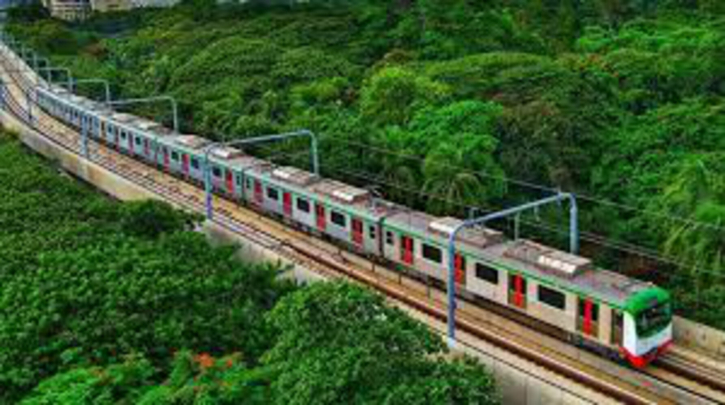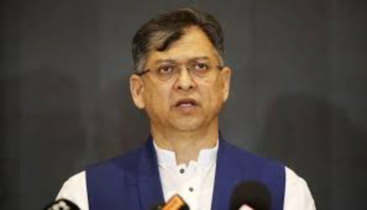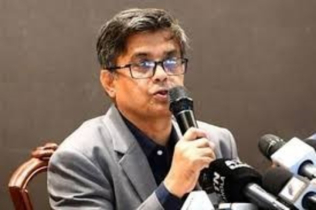
Narayanganj—once called the “Dundee of the East,” a hub of trade, culture, and heated politics—has seen a new issue dominate the conversation: “Why won’t Narayanganj get a Metro Rail?”* What was once a demand of a few urban planners and civil society members has now turned into a mass demand.
On the political front, leaders from BNP, Jamaat-e-Islami, Khelafat Majlis, Islami Oikya Jote, and even leftist groups are speaking in one voice.
Even some banned Awami League leaders, on condition of anonymity, admitted: “This is our lifeline demand.”
Plans to expand a Metro Rail network around Dhaka were made long ago. From MRT-6 to MRT-1, MRT-5, and MRT-2—five districts are being connected to Dhaka. These include Dhaka, Munshiganj, Manikganj, Gazipur, and Narsingdi—but Narayanganj was left out.
Experts say this decision is economically irrational. Narayanganj is the closest city to Dhaka. Every day, thousands of workers, students, businessmen, and patients travel to Dhaka. Similarly, people from Munshiganj and other nearby districts pass through Narayanganj to get there. Ignoring such a vital transport corridor is not only deepening the transport crisis but also leaving a huge gap in development planning.
On September 11, Tarikul Sujon, district coordinator of Ganasanghati Andolon, submitted a memorandum to Dhaka Transport Coordination Authority’s (DTCA) Additional Executive Director, Md. Mahbubur Rahman. He was joined by city coordinator Md. Biplob Khan, district joint coordinator Alomgir Hossain Alom, and district president of Bangladesh Student Federation, Farhana Manik Muna.
Tarikul Sujon said, “Hundreds of thousands of people from Narayanganj travel to Dhaka daily for education, healthcare, and jobs. Yet, MRT-2 has excluded Narayanganj. This is negligence toward the people of Narayanganj.” He added, “Passenger flow from Signboard to Narayanganj bus terminal is very high. A Metro Rail line here would be economically viable.”
DTCA’s Additional Executive Director Mahbubur Rahman agreed in principle, saying, “We will try to include Narayanganj in MRT-2. However, if the district administration takes a coordinated initiative, it will be more effective.”
In reality, no concrete steps have been taken yet. Narayanganj’s name is missing from government plans. Hence the question arises: why this exclusion? Narayanganj’s political history is filled with conflict—Awami League vs. BNP, Jamaat vs. the left. But on the issue of Metro Rail, everyone is united.
A BNP leader said, “No matter how much the government tries to undermine this demand, Metro Rail is Narayanganj’s lifeline. This is beyond party lines.” A local Jamaat leader added, “We have long been demanding modern public transport for Narayanganj. Without Metro Rail, this industrial city cannot be sustainable.” Leaders of Khelafat Majlis, Islami Oikya Jote, and left parties are voicing the same concern. Such rare consensus in Narayanganj is remarkable.
A former director of Narayanganj Chamber of Commerce said, “Every day, trucks, pickups, and containers leave our industrial zones for Dhaka. At the same time, workers squeeze into overcrowded buses. Traffic jams waste hundreds of thousands of work hours. Metro Rail would eliminate this loss. Major garment and dyeing factory owners also say workers’ productivity will increase if they are spared from travel hardships. That’s why they support the demand.”
Hundreds of students from Narayanganj College, Government Tolaram College, Fatullah Polytechnic, and Sonargaon University travel to Dhaka daily. The hardship has become part of their lives. Nusrat, a student at Government Tolaram College, said, “If we want to attend an 8 a.m. class, we have to leave home by 5 or 6 a.m. It’s difficult to arrive on time due to traffic. Metro Rail would make life much easier.” Thousands of students face the same struggle every day.
This is not the first time Narayanganj has been left out of major projects. From gas and electricity connections to river management projects and even road development, Narayanganj has often been overlooked. A local cultural activist said, “Just think of the Shitalakshya River. So many promises were made to clean it up. But in reality, nothing happened. Now, being excluded from Metro Rail—it feels like planned deprivation.”
The Dhaka–Narayanganj route has long been under the control of transport syndicates. There are fewer buses, but too many passengers. The buses that do run are dilapidated and unsafe. Passengers are forced to rely on rickshaws, auto-rickshaws, and CNGs at high fares. People complain that syndicates deliberately create shortages to raise fares. If Metro Rail comes, this syndicate’s grip will end.
What began as a topic among urban planners and businessmen has now become a mass demand. From Fatullah to Araihazar, Sonargaon to Rupganj—everywhere people are talking about it. A tea stall owner in the city said, “We don’t understand politics. But every day, we sweat and struggle to reach Dhaka. If there’s Metro Rail, of course we’ll be happy.”
Urban planners argue that to reduce the population pressure on Dhaka, Metro Rail in Narayanganj is essential. It will not only ease travel but also boost industrial productivity and reduce environmental pollution.
One urban expert said, “If you want sustainable urban development, you must connect nearby cities to Dhaka with modern mass transit. Excluding Narayanganj makes the whole plan incomplete.”
Government officials have given assurances, but no concrete actions have been taken. The Deputy Commissioner’s office has not yet sent an official letter to DTCA. As a result, hopes remain dim.
The public is asking: why this delay? Or is there some invisible reason behind Narayanganj’s repeated exclusion?
Narayanganj has always been at the center of political movements—from the 1952 Language Movement to the Liberation War, the anti-Ershad movement, and recent anti-government protests. Many now believe that Narayanganj is being deliberately neglected for political reasons. The growing unity around the Metro Rail demand could signal a larger movement in the future. Political parties are voicing the demand now, but if people take to the streets, the situation could take a different turn.
A leftist leader said, “We want this demand fulfilled peacefully. But if the government ignores it, people will take to the streets.”
Narayanganj has carried the burden of deprivation for a long time. But this time, the people are rising up over Metro Rail. The demand is tied to education, healthcare, jobs, business, and everyday life. When political parties, businessmen, workers, students, and civil society all stand together, the issue cannot be dismissed. Excluding Narayanganj from the Metro Rail project is not just a loss for one city—it is a major setback for the national economy and sustainable urban development.
TH

.png)







